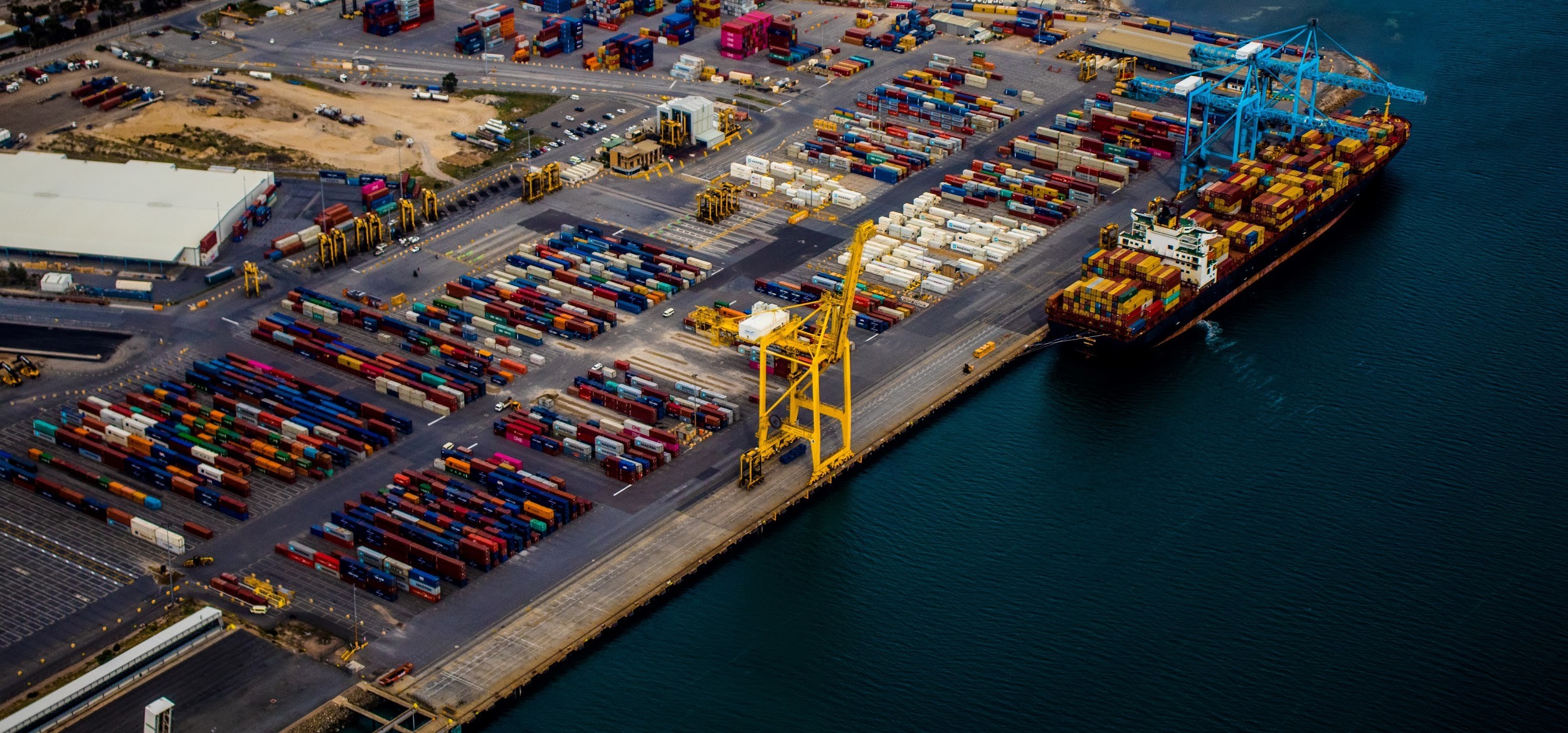Ports and terminals are essential to global and domestic supply chains. The United States transportation industry, which includes the services provided by trucking, distribution, warehousing, and logistics companies, keeps bulk liquids and dry goods containers moving into and out of ports nationwide. When there is a breakdown in the transportation sector, such as with COVID-19, containers of goods and barrels of bulk liquids pile up at the ports resulting in clogging, congestion, and the disruption of business continuity in commercial and industrial sectors, as well as direct to consumer channels.
The coastal states of Washington and California became the first in the USA to identify positive cases of COVID-19. Early in the fight against this global pandemic amidst great uncertainty political borders were rapidly closed to control the spread of the virus. These closures included flights and ships from China, one of our largest trading partners. Within the USA, limitations on drivers were also imposed in order to contain the spread of the virus. With businesses closed, stay at home orders being rolled out and the additional disruptions in transportation numerous goods had no place to go. This resulted in the rapid need for inventory storage and the development of new sales, marketing and product delivery channels. However, COVID-19 did not have uniform impacts across industries. “Hard hit” areas showed an increase in demand for groceries, consumer goods and medical supplies (Desai). Simultaneously, certain distribution centers had outbreaks among employees and were shut down, or functioned at a decreased capacity. This resulted in severe regional supply and demand imbalances. In response, creative and humanitarian cooperation among chassis leasing companies, motor carriers, shippers, logistics and distribution companies resulted in keeping essential goods moving to meet the needs of the American people.

Declining Imports
Beginning with the outbreak of COVID-19 in China, manufacturing exports from Asia to the US decreased dramatically early in 2020. Many US ports received 20% less cargo in the first Quarter (Smith). Imports to the US declined 6.2% in March while exports declined 9.6% expanding the trade deficit (Bartash)(News).
The American Association of Port Authorities (AAPA) as recently as May 15th, 2020 reported declines in most cargo of 15% – 25%, with non-containerized break-bulk cargos down 27% year over year (Brady).
Ports became congested not with containers of cargo waiting to be shipped to it’s final destinations. Instead, ports were clogged with “empties”, containers from cargo shipments which had arrived prior to the shut-down and which were returned to the port after delivering cargo to its final destination (Link-Wills). Ocean carriers cleared out most of the empty containers. Now, some manufacturing abroad is resuming and an uptick at the ports is expected to commence in the near future (Link-Wills).
A Slow Recovery is Forecast
With fewer ships arriving and many of the empties cleared off, port congestion is easing. Freight rates are starting to rise. The immediate future remains highly unpredictable and reduced demand is hitting certain industries hard. However, as states in the USA began re-opening a 17.7% spike in consumer retail sales emerged, surprising many expert forecasters (Siegel). The most recent forecasts are better than those from a month ago for TEU shipments in June, July, and August, but these forecasts are still down double digits from 2019 (Shearman).
Partnering to Minimize Supply Chain Disruptions
To address these challenges the transportation industry is facing due to supply chain disruptions caused by COVID-19, cooperation is needed by dedicated people across multiple transportation channels. Some recommended strategies for managing uncertainty include:
- Communicate potential transportation and storage equipment needs early and often.
- Consider leasing to expand your fleet quickly, while minimizing upfront capital.
- Contract with a trusted leasing partner who has experience in both shrinking and expanding economies.
- Lease equipment with the right add-ons and safety features for your product(s).
Chassis leasing companies, such as Penn Intermodal Leasing LLC, have been leasing equipment to customers to provide additional temporary storage and in order to move bulk liquid freight. Contact Penn today if you are interested in leasing drop frame tank chassis at depots located near most major ports.
Sources
- Bartash, Jeffry. “U.S. Trade Deficit Soars 12% in March as Coronavirus Slams Exporters and Tourism.” MarketWatch, MarketWatch, 5 May 2020, www.marketwatch.com/story/us-trade-deficit-soars-12-in-march-as-coronavirus-slams-american-exporters-2020-05-05.
- Brady, Jessica. “Port Terminal Update and Cargo Facility Fees.” North American Shippers Association, 15 May 2020, www.nasaships.com/port-terminal-update-and-cargo-facility-fees/.
- Desai, Yatish. “Navigating the COVID-19 Impact to U.S. Transportation and Logistics Ecosystems.” KPMG, 7 Apr. 2020, advisory.kpmg.us/content/dam/advisory/en/pdfs/2020/covid-19-impact-transportation-logistics.pdf.
- Link-Wills, Kim. “Maritime Industry Bands Together to Weather Supply Chain Storm.” FreightWaves, 31 Mar. 2020, www.freightwaves.com/news/maritime-industry-bands-together-to-weather-supply-chain-storm.
- News, World Maritime. “US Ports Fight to Stay Open amid Unfolding COVID-19 Crisis.” Offshore Energy, 18 Mar. 2020, www.offshore-energy.biz/us-ports-fight-to-stay-open-amid-unfolding-covid-19-crisis/.
- Shearman, J. Craig. “Pandemic’s Impact on Imports Easing, but Numbers Are Still below Last Year.” NRF, 8 June 2020, nrf.com/media-center/press-releases/pandemics-impact-imports-easing-numbers-are-still-below-last-year.
- Siegel, Rachel, and Abha Bhattarai. “Record Jump in Retail Sales Sends Stocks Higher, but Fed Chief Warns Economic Recovery Remains Uncertain.” The Washington Post, WP Company, 16 June 2020, www.washingtonpost.com/business/2020/06/16/retail-sales-may/.
- Smith, Jennifer, and Costas Paris. “U.S. Ports Likely to See Slump in Cargo Volume From Coronavirus.” The Wall Street Journal, Dow Jones & Company, 3 Mar. 2020, www.wsj.com/articles/u-s-ports-likely-to-see-slump-in-cargo-volume-from-coronavirus-11583274643.

